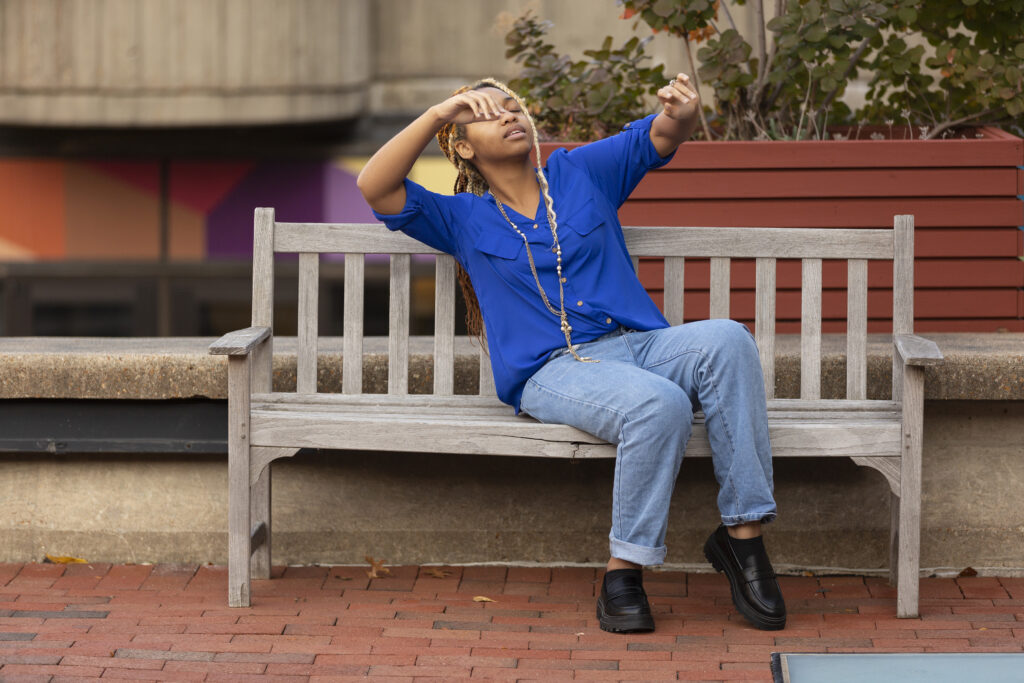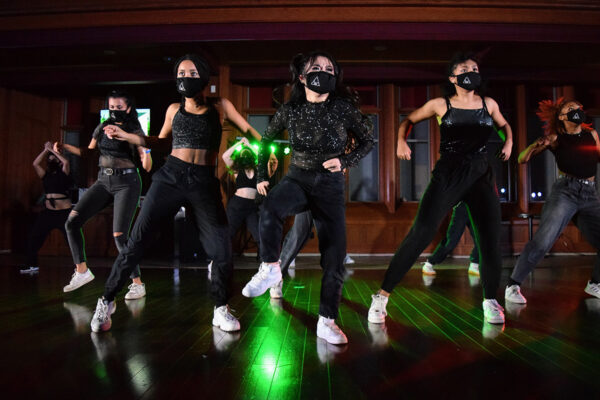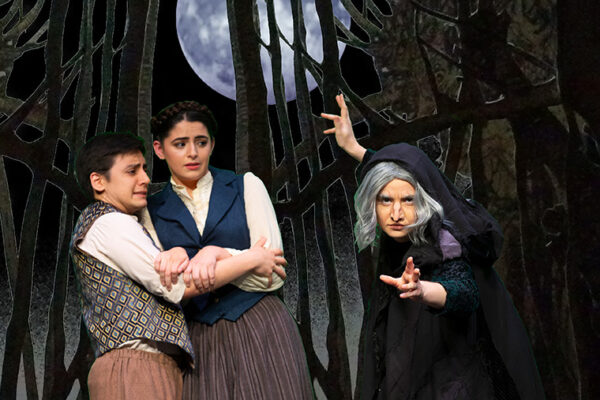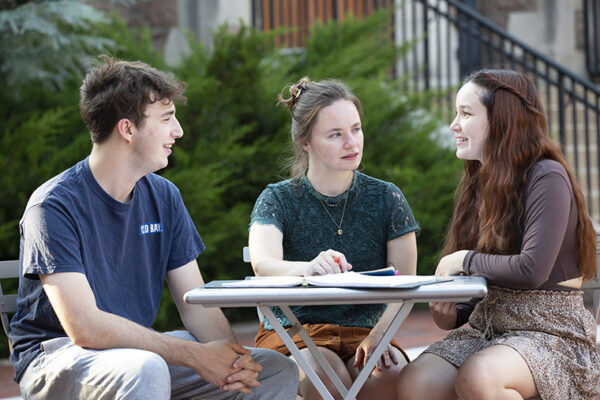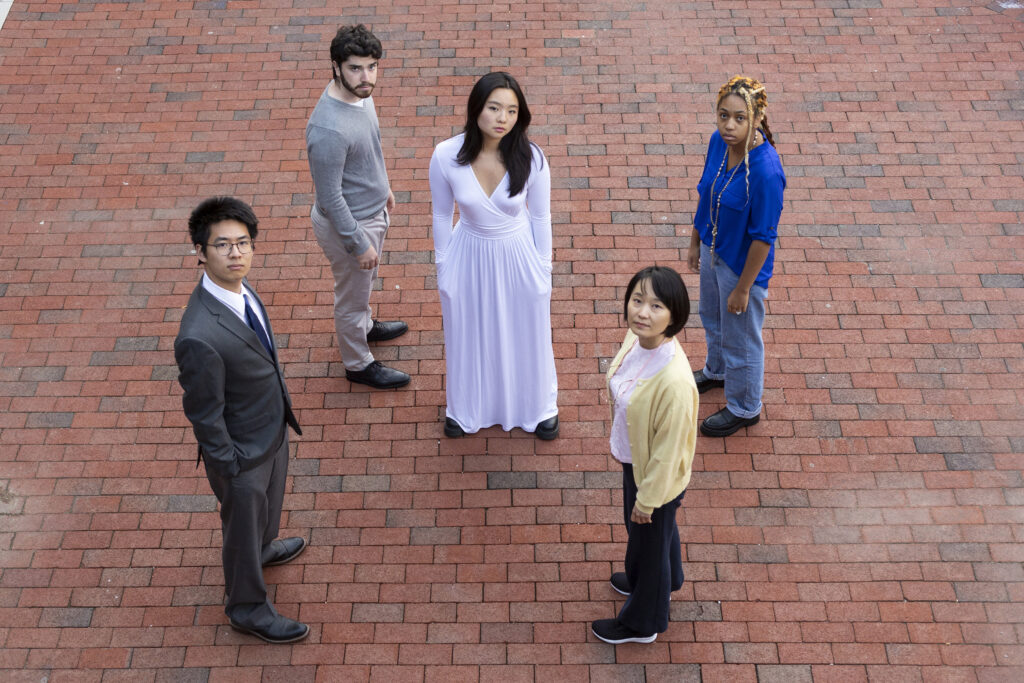
Wife: We each are only a speck of dust, nothing grand, incomplete.
Doctor: A bit of information falling in the air.
— From “The Dust” by Hsu Yen Ling
A performer panics. A universe detonates. Adam and Eve relocate to Mars.
In “The Dust,” Taiwanese playwright Hsu Yen Ling combines six short, genre-bending scenes that together explore what she calls “the instant of explosion.” Beginning Nov. 17, the Performing Arts Department (PAD) in Arts & Sciences at Washington University in St. Louis will present the U.S. premiere of “The Dust” in its A.E. Hotchner Studio Theatre.
“This is a provocative play,” said William Whitaker, a professor of practice in drama, who directs the cast of seven. “The scenes are spare and experimental, but each has a strong narrative center.
“Hsu writes with real precision,” Whitaker added, “and a marvelous performative edge.”
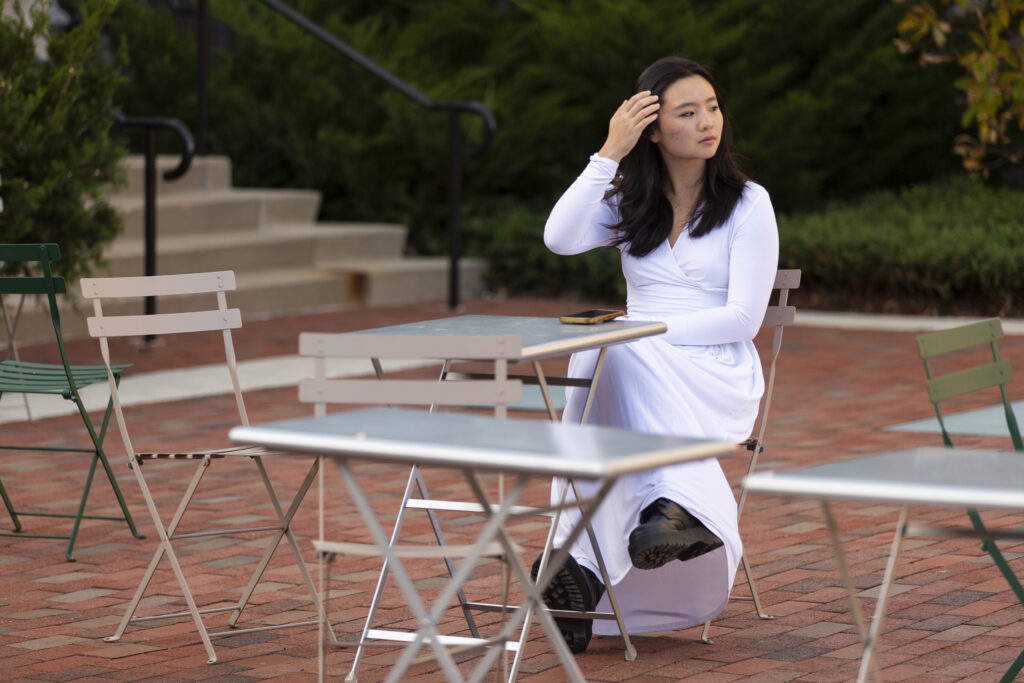
‘Existence and destruction’
Hsu studied acting at the National Taipei University of the Arts and is the author of several previous Mandarin-language plays, including “Six-trimmed Whip” (1994), “Skin Touching” (2004) and “Sisters Trio” (2006). “The Dust” was written for the National Central University’s Black Box Theatre and premiered as part of the 2013 Second Breakthrough Art Festival.
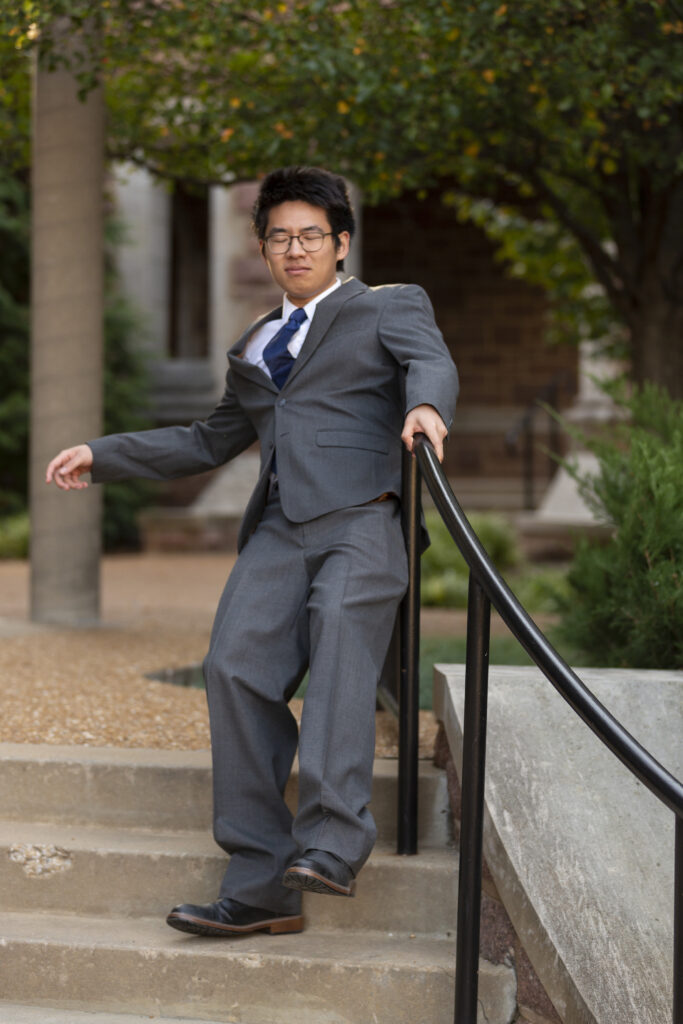
In a preface to “The Dust,” Hsu explained that its central theme is “the existence and destruction of human bodies” — a concern that manifests both through Hsu’s investigations of medicine, genetics and the ethics of technology, and through the latitude she allows actors in developing the play’s impressionistic and often dancelike movements and phrasing.
Structured as a series of six dialogues, “The Dust” opens in a burst of light and music. This preface is quickly followed by “Photographs and Bloodlines,” the first scene, which examines a mother’s attempts to reconnect, in the age of social media, with a lost biological son.
Next comes “Premonition,” which centers on a doctor’s fear of mortality and his wife’s fear of not knowing the worst. In “Virtual Singer,” we meet a performer whose career, built in imitation of another, ends with a blinding flash.
Though each scene stands on its own, seemingly disconnected from the others, thematic resonances abound. For example, in the play’s second half, the theme of parenthood returns with “Lend Me Mars,” which finds Adam and Eve wandering the red planet a year after Earth’s destruction.
Notions of artistic creation, first raised in “Virtual Singer,” are reprised during “Rodin’s Statues,” in which a pair of tourists, known only as A and B, visit the museums of Paris. The final scene, “Buying a Loaf of Bread/Twenty-Five Years,” echoes the opening examination of absence and reconnection. Here, a long-missing man returns mysteriously home, only to find an art student painting his apartment ceiling red.
“We don’t know what’s happened to him; it could be dementia, or something else,” Whitaker said. “But both the old man and the student are, in many ways, lost souls. And somehow, though the dust of this universe — in those moments where we explode and disintegrate and come back together again — they discover one another.
“The narrative may be fractured,” Whitaker concluded, “but it has a kind of collective gravity.”
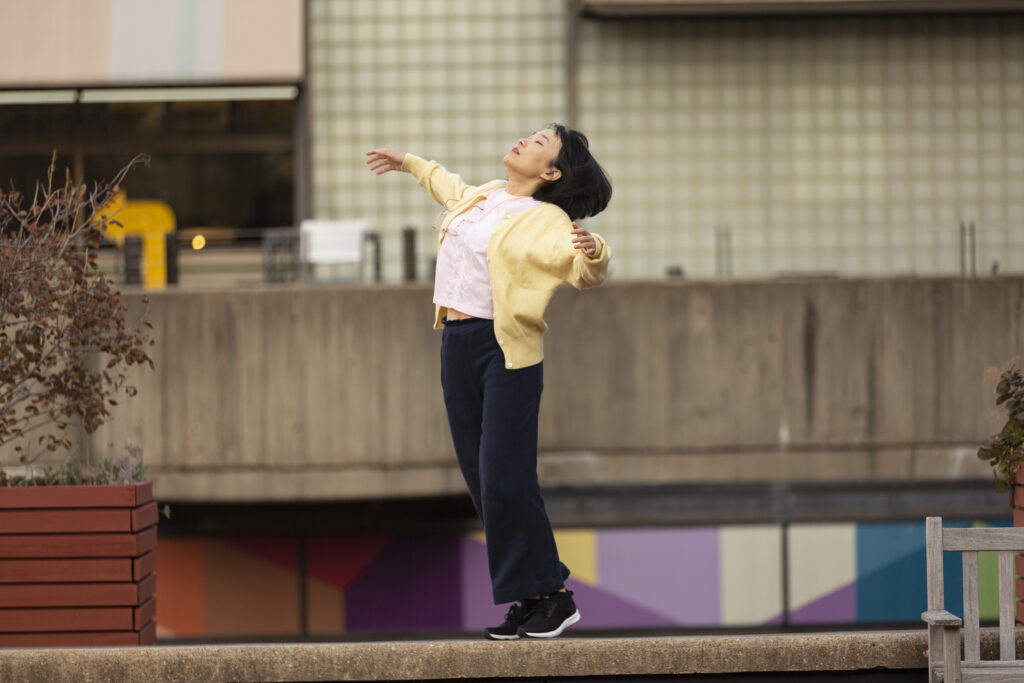
Cast & crew
In conjunction with this production, the PAD commissioned an original translation of “The Dust” by Annelise Finegan, a 2021 doctoral alumna in comparative literature who now directs translation and interpreting at New York University’s Center for Publishing and Applied Liberal Arts.
The cast of seven features Zach Berger as the doctor; Ben Faden as A; Michael Gao as the son and Adam; Yan Ma as the mother and the singer; Hope McKinney as the wife and B; E.M. Powers as the producer and the old man; and Bei Qi as Eve and the student.
Sets and costumes are by Patrick Huber and Dominique Green, with props by Cameron Tesson. Lighting and projections are by Sean Savoie. Zach Cohn is the sound designer. The choreographer is Elinor Harrison; John Noonan is the stage manager. Ryan Hung is the assistant director; the technical director is Jack Rushen.
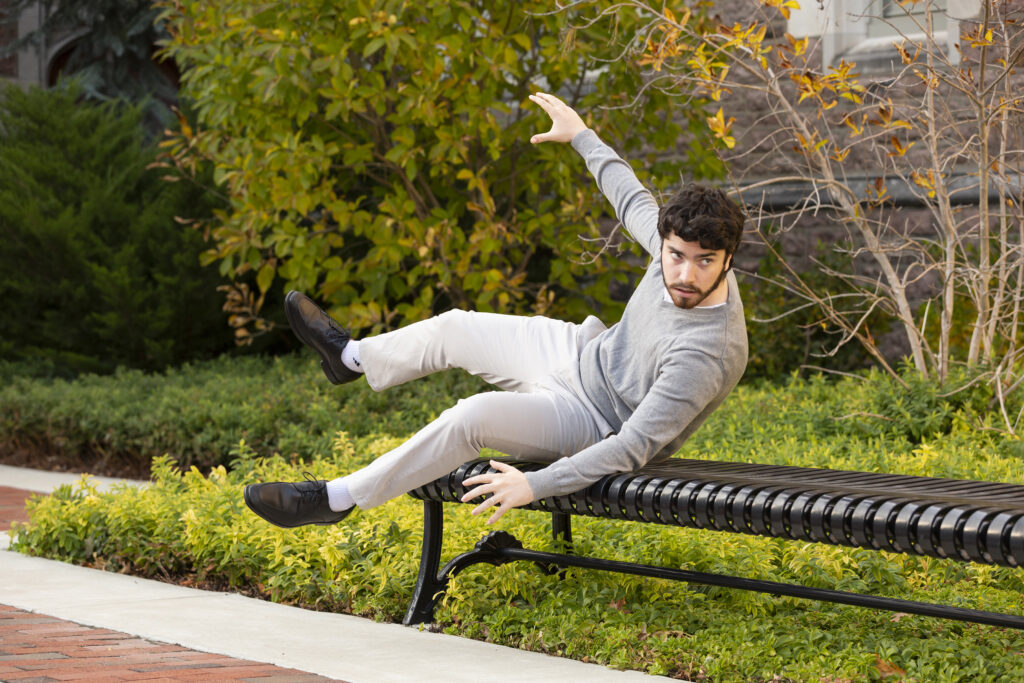
Tickets
Performances of “The Dust” will begin at 8 p.m. Thursday, Friday and Saturday, Nov. 17, 18 and 19; and at 2 p.m. Saturday and Sunday, Nov. 19 and 20. In addition, the Nov. 18 performance will include a post-show discussion with Whitaker, Finegan and Hsu.
Tickets are $20, or $15 for seniors, students and WashU faculty and staff, and free for WashU students. Tickets are available through the Edison Theatre Box Office.
This production of “The Dust” is supported by a grant from the Ministry of Education of the Republic of China (Taiwan). For more information, call 314-935-6543 or visit pad.wustl.edu.
